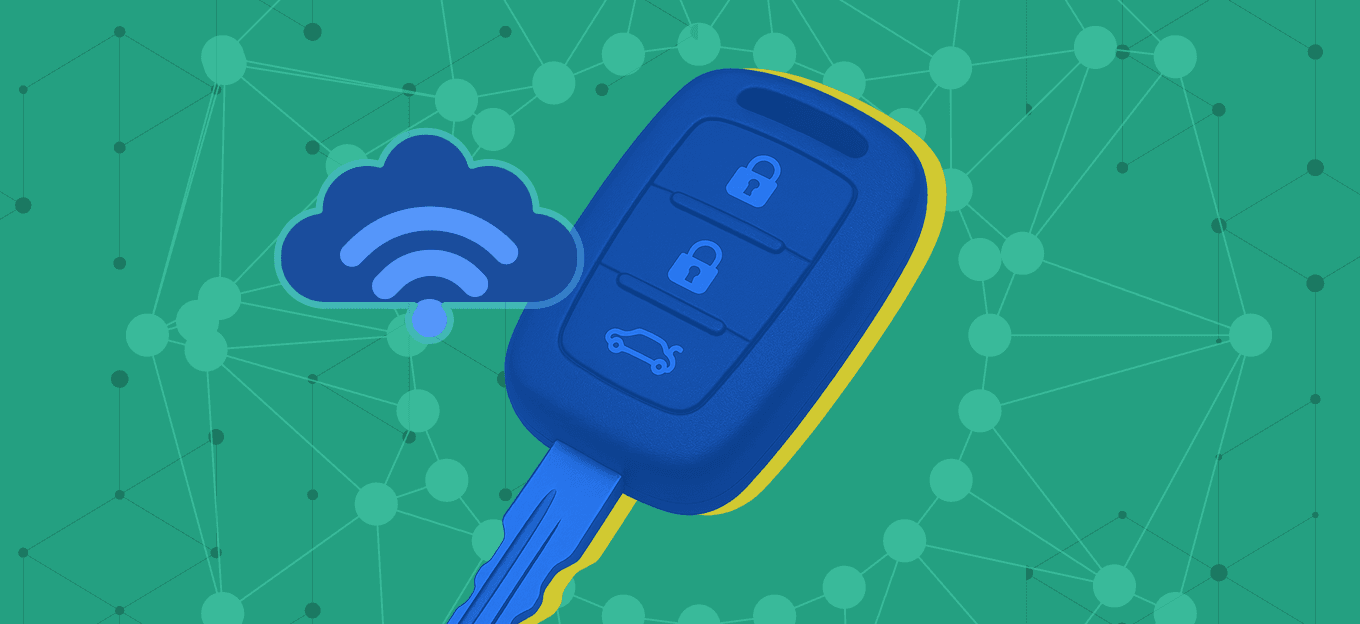How IoT-Enabled Key Management Drives Operational Efficiency
How IoT-Enabled Key Management Drives Operational Efficiency
- Last Updated: August 11, 2025
Keycafe
- Last Updated: August 11, 2025



Fleet operations hinge on two vital currencies: time and security. Every moment a driver spends hunting for a key is a moment a vehicle sits idle, and every unsecured key slot is a potential breach. Traditional pegboards and paper logs create blind spots that ripple into missed dispatches, inflated labor costs, and compliance headaches. Today, however, a new breed of Internet-of-Things (IoT)-enabled key management systems, combining intelligent lockers, edge sensors, and cloud software, turns those blind spots into streams of real-time data, driving measurable efficiency gains.
From Check-Out to Cloud: How It Works
At its core, an IoT-enabled locker transforms each key slot into a networked endpoint. Embedded sensors detect check-in and check-out events and relay them instantly, over cellular, Wi-Fi, or Ethernet, to a centralized dashboard. This simple innovation replaces manual hand-offs with automated signaling: dispatchers see precisely which vehicle keys are available at any given second, maintenance teams receive alerts when a key remains in use beyond its scheduled return, and security officers are notified of forced-open alarms the instant they occur.
Predictive Workflows Cut Downtime
Consider the downtime impact. According to Pelion, IoT-powered fleet management platforms can reduce unplanned vehicle downtime by up to 30 % through real-time data and predictive analytics. When key-management events feed into these platforms, the savings compound: you not only know that Truck 42 is due for service, you also see its key locked away, preventing dispatch until repairs are complete. The result is a seamless, preventive workflow that shaves hours off maintenance delays and keeps vehicles moving.
Speed and Productivity in Dispatch
The benefits aren’t limited to maintenance alone. In fast-paced dispatch environments, like last-mile delivery or emergency response, every second counts. A 2023 study in IoT Business News highlights that IoT-driven fleet applications optimize processes and reduce downtime, resulting in higher productivity and improved resource allocation. By embedding key-access events within that IoT fabric, organizations eliminate “who has the key?” delays altogether. Drivers tap a badge or enter a PIN on a SmartBox locker, retrieve their key within seconds, and move on to the next pick-up—no detours back to the dispatch office, no phone tag for missing keys.
Security and Auditability by Design
Security and auditability, often an afterthought, become intrinsic advantages. Legacy key cabinets rely on paper logs that are prone to back-dating, erasures, and simple human error. In contrast, IoT-enabled systems record every interaction digitally. Each check-in/out event logs a user ID, timestamp, and a GPS coordinate. Managers can generate audit-ready CSV reports in seconds, instead of spending hours reconciling spreadsheets —an efficiency gain that fleets report as a 94% reduction in audit preparation time.
Scaling Without Headaches
Scalability is another hallmark of well-architected IoT solutions. As fleets expand into new territories —such as satellite depots, temporary field sites, or mobile command centers—traditional lockers require manual configuration for each location, stretching IT resources thin. Modern SmartBoxes, however, ship with “plug-and-play” provisioning: as soon as they power on and connect, they pull down user credentials, slot assignments, and access rules over the air. This “zero-touch provisioning” model lets operations teams deploy new lockers in minutes, not days. If a network outage occurs, edge-level logic keeps the locker enforcing access policies locally and queues events for upload once connectivity is restored, a capability often referred to as “edge resilience.” Fleet managers sleep well knowing that even off-grid command posts maintain uninterrupted key control.
Building Integrated Ecosystems
Integration is where the real magic happens. An IoT-enabled key management platform is not a silo; it is a node in a broader fleet ecosystem. When telematics report a diagnostic fault like low oil pressure, the system can automatically mark the corresponding key as “maintenance required.” A dispatcher sees the alert and blocks that key via the locker’s web dashboard, preventing any driver from accidentally taking a vehicle with an unresolved issue. Similarly, pairing key management events with route optimization tools allows dispatchers to align vehicle availability with demand in real-time. This interconnected “predictive workflow” reduces unplanned downtime, and fleets adopting such automated handoffs report up to 30% fewer service delays.
ROI and Beyond
In the hard numbers, fleets deploying IoT-enabled key management often see full payback in under 12 months. Savings accrue through reduced labor spent tracking down keys, lower unplanned maintenance costs, and fewer compliance penalties. One large logistics provider documented a 90 % reduction in key-related delays after integrating SmartBoxes into their depots—an impact that translated into six-figure annual savings at a single distribution center.
Getting Started
To get started, fleet managers should pilot IoT-enabled lockers at their busiest facility. Measure baseline key retrieval times, downtime events, and audit preparation effort. Then, roll out the solution, integrate it with telematics and maintenance platforms, and track the same metrics post-deployment. Within weeks, the data will speak for itself: vehicles in motion more often, service bays filled by scheduled maintenance instead of emergency breakdowns, and administrators freed from paperwork to focus on strategic initiatives.
As fleets transition toward electrification and autonomous operations, these IoT key endpoints will become increasingly critical. Connected lockers become part of a digital thread that spans from key-to-vehicle to cloud analytics, underpinning predictive maintenance, safety compliance, and operational agility. In a landscape defined by tight margins and high expectations, converting physical keys into live data can be one of the most straightforward and highest-ROI moves a fleet can make.
The Most Comprehensive IoT Newsletter for Enterprises
Showcasing the highest-quality content, resources, news, and insights from the world of the Internet of Things. Subscribe to remain informed and up-to-date.
New Podcast Episode

Moving Past the Pilot Phase in IoT and AI
Related Articles




